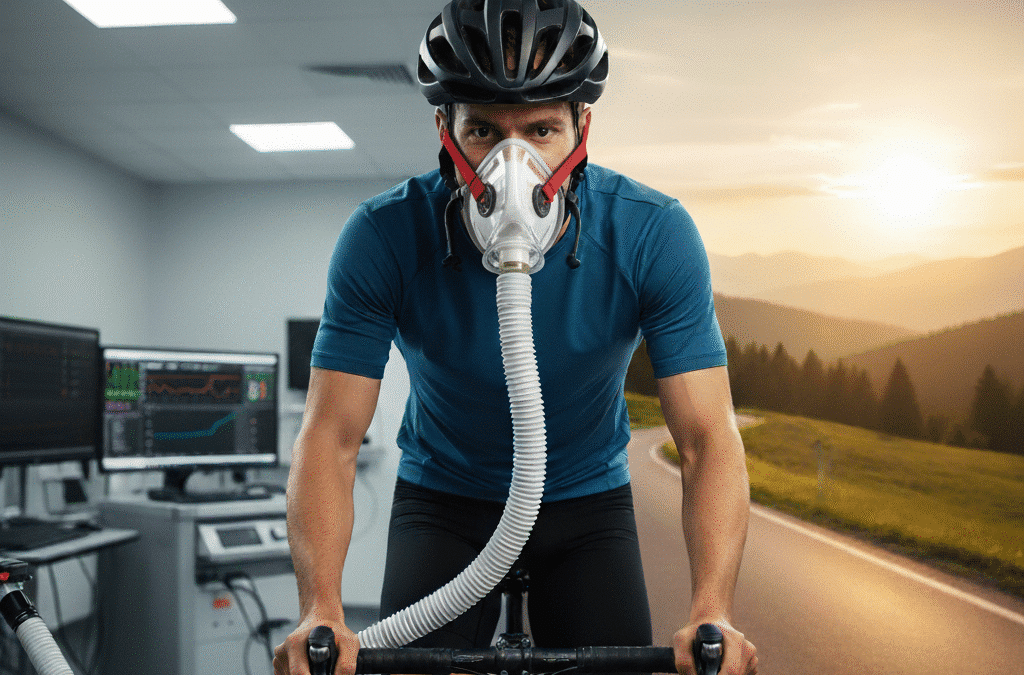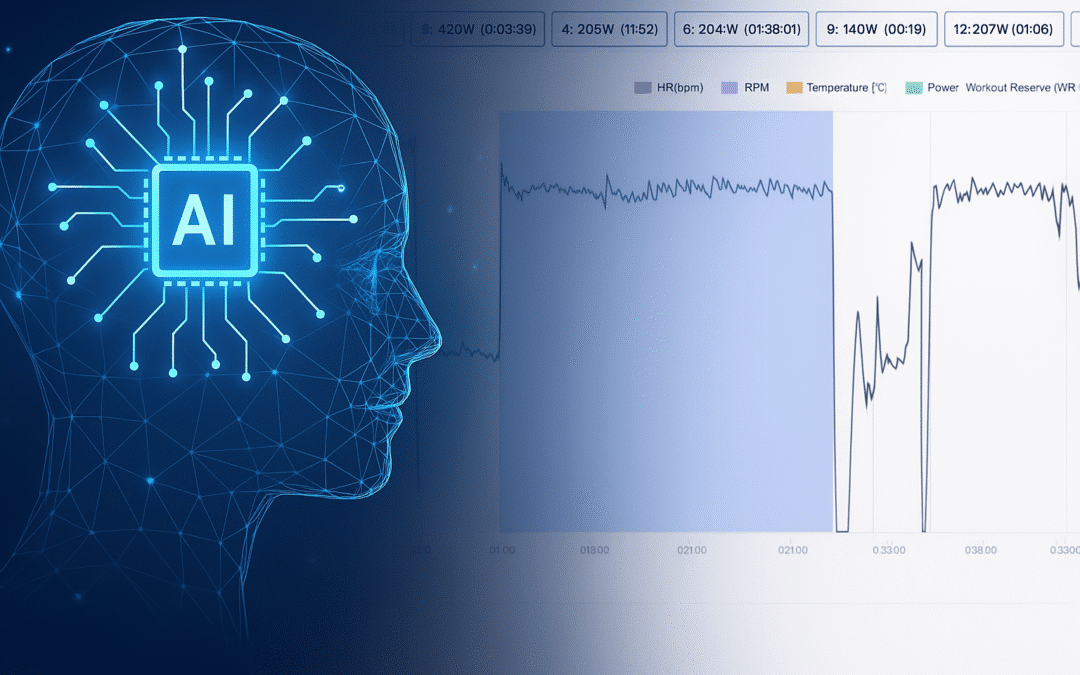
2. Heart-Rate: The Internal Compass
Strengths
- Direct measure of physiological stress and hydration status.
- Automatically adjusts for temperature, altitude, and accumulated fatigue (cardiac drift).
- Ideal for sub-threshold durability runs/rides/rows where the target is staying aerobic (Zone 2 / MAF).
Limitations
- 15–60 s lag when pace or power jumps.
- Influenced by caffeine, stress, sleep, and illness.
- Has a cap or ceiling at its maximal rate (top of Zone 5) and can’t go any higher than its max, even though pace or power can (e.g., sprints).
Use it for
- Long Zone 2 runs, rides or rows.
- Heat or altitude acclimation sessions where HR drift is the safety governor.

3. Pace: Simple, Cheap, Surprisingly Powerful
GPS pace is still king for runners because it:
- Responds immediately on flat terrain, letting you nail target speeds over 400 m repeats to ~20 min threshold blocks.
- Pairs easily with race plans (“I need 4:30 min/km to break 1 h 35 for my half”).
- Requires no gadgets beyond your watch/phone.
Watch-outs
- GPS wobble in heavy tree cover or urban canyons.
- Steep climbs or headwinds slow pace even though effort stays high (where HR or power shines).
- Doesn’t scale perfectly across sports (i.e., doubly impacted by water current and wind for on-water rowing sessions).

4. Power: The Objective Work-Rate
Cyclists discovered decades ago that a watt is a watt, whether on a calm road or a 9 % grade. Runners now have foot-pods (e.g., Stryd) that estimate horizontal and vertical forces to the tune of ±5 %.
Pros
- Instant feedback – no physiological lag.
- Terrain-agnostic pacing (normalises for hills & wind).
- Clear link to critical power (CP) testing.
Cons
- Start-up cost and occasional calibration.
- Bike power ≠ run power ≠ rowing wattage – you still need sport-specific zones.
- Rookies can over-focus on numbers and neglect the bigger picture.

5. How to Choose: A Practical Decision Matrix
|
Workout type |
HR |
Pace |
Power |
|
Easy / Zone 2 |
✅ Primary |
↗ Support* |
↗ Support* |
|
Long climb / hills |
✅ |
❌ |
↗ |
|
Tempo / marathon pace |
↗ |
✅ |
↗ |
|
Threshold (20 min) |
↗ |
✅ |
✅ |
|
VO₂ (1-5 min) |
↗ |
✅ |
✅ |
|
Anaerobic/neuromuscular ≤30 s |
❌ |
❌ |
✅ |
*Support = record the data but don’t let it steer the session.
6. Sport-by-Sport Nuances
Running
- HR for durability runs; pace (or power pod) for intervals on flat terrain.
- Hilly trail? Use HR cap on climbs, let pace fall.
Cycling
- Power almost always rules ≥CP work (HIIT).
- HR covers endurance rides, especially in heat.
Triathlon/Duathlon (as above plus…)
- Bike: power for pacing; Run: HR in early miles to avoid over-cooking, switch to pace/feel late.
- Brick workouts: watch HR inertia (i.e., remains elevated) coming off the bike. Go steady to let it settle in.
Rowing / Ski-erg
- Wattage maps cleanly to stroke rate; HR great for long aerobic base rows.
Hyrox / Functional Fitness
- Mixed-modality stations spike HR unevenly – target wattage on Ski-erg/Rower, then monitor HR ceiling during runs; drop pace as necessary.
7. How Athletica’s Smart Coach Automates the Choice
- Sub-threshold workouts → exported to Garmin/Wahoo as HR-guided sessions.
- Threshold or harder → exported as pace/power (run) or power (bike) targets.
- Toggle anytime under Settings ▸ Connections ▸ Configure.
But the choice to use heart rate, power or pace, as always, is yours.

8. Common Mistakes (and Quick Fixes)
- Wrong HR/Pace/Power zones: Base them on tested max or threshold (i.e., Athletica Test Week) or your critical pace/power charts, not predictive formulas.
- Only wrist-HR: Chest strap or optical arm band if sessions matter. Wrist-based HR is still problematic.
- Chasing pace on hills: Let HR/power cap help dictate effort.
- Ignoring calibration: Zero-offset your power meter weekly; update power-pod shoe size & weight.
- Forgetting the importance of feel/RPE: While HR/Pace/Power are important guiding metrics, they can never replace the importance of developing your feel for training and what is right in any given moment. Use your tools (wearables and Athletica) to help you dial in your successful training practice.
9. FAQs
- Is heart-rate or pace better for Zone 2 runs?
Heart-rate. Pace swings with terrain and fatigue; HR keeps the session aerobic (i.e., in your MAF range). - Why does my HR lag when I start intervals?
Cardiovascular and metabolic kinetics take 15-60 s to catch up, so external load should steer short efforts. - Does running power replace pace on hills?
Yes – power accounts for gradient and wind, giving a truer effort match (Hawkins et al, 2020). - Should cyclists trust power or HR on hot days?
Use power to pace, but watch HR drift as a safety ceiling. If HR climbs ≥10 bpm above normal at your typical wattage, ease off. - How do I know my HR zones are correct?
Perform a lab or field test (e.g., Athletica Test Week) and derive zones from the data analysis. - Can I mix metrics in the same workout?
Absolutely – and you should. The idea is to use your training guidance or prescription (e.g., power/pace/HR targets) and align these with your feel for training. Once you’ve done enough training you should play games whereby you guess how close your power/pace/HR is at any given moment. The closer your feel gets to your data, the more in tune athlete you are becoming. - Which metric is best for triathlon race pacing?
Bike: power (steady); Run: HR early, pace late once HR stabilises. But ‘feel’ trumps all metrics in terms of performance that will lead to your success. - How does Athletica decide which metric to send to my watch?
Smart Coach identifies your intensity-zone and automatically chooses HR (sub-threshold) or pace/power (threshold+). - Is wrist HR accurate enough?
Getting better all the time but still not as good as a chest strap or arm band. A great place to start if you’re on a budget but work towards the chest strap if you’re getting serious about your training. - What’s cardiac drift and should I worry?
Gradual HR rise at constant power/pace during long sessions, more pronounced in heat with dehydration or at altitude.
References
Ahlgrim, A., Smith, R., & Johnson, K. (2020). Characterizing the heart-rate response to the 4 × 4 interval protocol. Sports, 8(7), 93. https://doi.org/10.3390/sports8070093
Bentley, D. J., Newell, J., & Bishop, D. (2023). A new perspective on cardiovascular drift during prolonged exercise. Frontiers in Physiology, 14, 1184023. https://doi.org/10.3389/fphys.2023.1184023
Hawkins, S. F., Shaw, A. J., & Brown, N. A. (2020). Validity of the Stryd power meter in measuring running parameters. Sensors, 20(21), 6483. https://doi.org/10.3390/s20216483
Laursen, P. B., & Buchheit, M. (2018). The science and application of high-intensity interval training: Solutions to the programming puzzle. Human Kinetics.
Périard, J. D., Racinais, S., & Sawka, M. N. (2012). Cardiovascular drift during heat stress: Implications for exercise prescription. Sports Medicine, 42(10), 891–912. https://doi.org/10.2165/11632330-000000000-00000
Stone, M. R., Thomas, K., Wilkinson, M., & Jones, A. M. (2013). Effects of high-intensity training prescribed by heart-rate or power in recreational cyclists. Journal of Sports Sciences, 31(9), 1042–1050. https://doi.org/10.1080/02640414.2012.758187
Ready to Train Smarter?
Start a 14-day free trial of Athletica and let Smart Coach choose the right metric for every workout – automatically adapting as your fitness and environment change.
Cancel any time. No credit card required.






